Bitternut Hickory Tree
- November 14, 2024
- 0 comment
The Bitternut Hickory Tree (Carya cordiformis) is a unique and ecologically important member of North American forests. As part of the hickory family, this tree contributes to biodiversity, offering food and shelter to wildlife and playing a role in forest ecosystems’ stability and soil health.
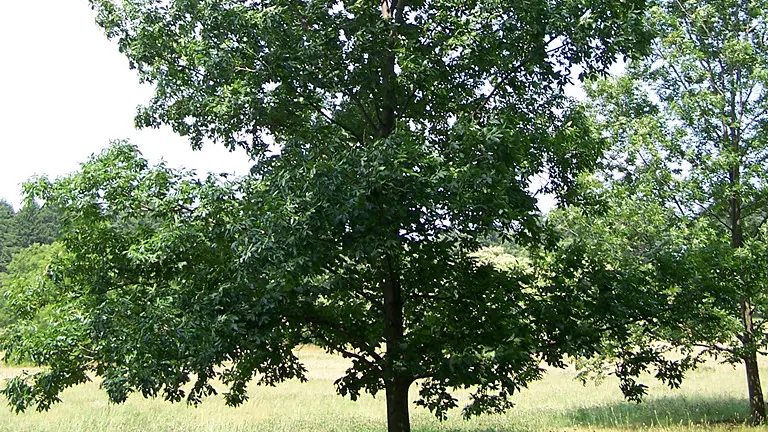
Known for its sturdy wood and nutritious nuts (though bitter for human consumption), this tree has both ecological and practical significance.
What Is a Bitternut Hickory Tree?
The Bitternut Hickory Tree, classified scientifically as Carya cordiformis, belongs to the walnut family, Juglandaceae. It is a deciduous hardwood tree native to the eastern and central United States and parts of Canada.
| Characteristic | Description |
|---|---|
| Species | Bitternut Hickory Tree (Carya cordiformis) |
| Common Names | Bitternut, Swamp Hickory, Bitter Pecan |
| Lifespan | Can live up to 200–300 years |
| Location | Native to Eastern and Central U.S., parts of Canada |
| Height | Typically grows 20–30 meters (65–100 feet) |
| Leaves | Compound, with 7–11 leaflets; bright green, turning yellow in fall |
| Flowers | Small, yellow-green, with male catkins and small female spikes |
| Ecological Role | Prevents soil erosion, enriches soil, supports forest ecosystems |
| Cultural Importance | Valued for strong wood in tool handles and furniture |
| Adaptability | Thrives in moist, well-drained soils, tolerates partial shade |
| Wildlife Support | Nuts provide food for squirrels, birds, and other animals |
| Economic Use | Wood used for fuel and durable items; nut supports wildlife |
| Pollination | Wind-pollinated; flowers attract some insects |
| Symbolic Meaning | Represents resilience, strength, and natural longevity |
With distinct compound leaves, grayish-brown bark, and a nut that is bitter and heart-shaped, this tree is easily recognizable. Bitternut Hickory trees are known for their longevity, typically living between 200-300 years, and their ability to improve soil by recycling nutrients. They also play a crucial role in supporting local wildlife, providing food sources for animals like squirrels and birds.
Three Different Types of Bitternut Hickory Tree Species
While Carya cordiformis is commonly known as the Bitternut Hickory, it shares the hickory family with related species such as:
Shagbark Hickory (Carya Ovata)
Recognizable by its peeling bark and large, edible nuts.
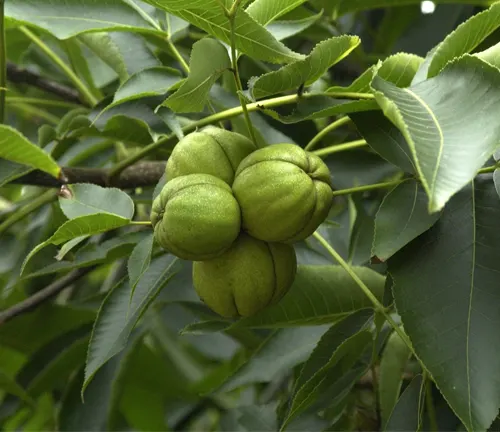

Pignut Hickory (Carya glabra)
Found in drier soils with smaller nuts.
Mockernut Hickory (Carya Tomentosa)
Known for its dense wood and leaves with a fuzzy texture.

These species can vary in their habitat preferences, size, and the type of nuts they produce, each contributing uniquely to their environments.
Where Do Bitternut Hickory Trees Grow?
Bitternut Hickory Trees are primarily native to the eastern United States and southeastern Canada. These trees thrive in a variety of environments, especially in moist, well-drained soils found in floodplains and lowlands.
They can tolerate a range of climates, from temperate to subtropical, making them highly adaptable. Bitternut Hickory plays a key role in forest ecology by stabilizing soil and providing habitat for numerous species, from mammals to birds. Its extensive root system helps prevent erosion, while its fallen leaves and nuts contribute to soil enrichment.
How to Grow and Care for Bitternut Hickory Trees
For those interested in cultivating a Bitternut Hickory Tree, it’s essential to follow these guidelines:

- Soil: Prefers deep, fertile, and well-drained soil with a neutral to slightly acidic pH.
- Water Needs: Requires consistent moisture, particularly when young. Mature trees are more drought-tolerant but benefit from supplemental watering in prolonged dry spells.
- Sunlight: Thrives in full sun to partial shade.
- Propagation: Best grown from seeds, which should be stratified (exposed to cold conditions) for a few months before planting.
Tips for Maintenance:
- Pruning: Minimal pruning is needed, primarily to remove dead or damaged branches.
- Pest Protection: Keep an eye out for common hickory pests such as hickory bark beetles and scale insects. Early intervention can prevent damage.
Ecological Benefits of Bitternut Hickory Trees
Bitternut Hickory Trees offer a range of ecological advantages:
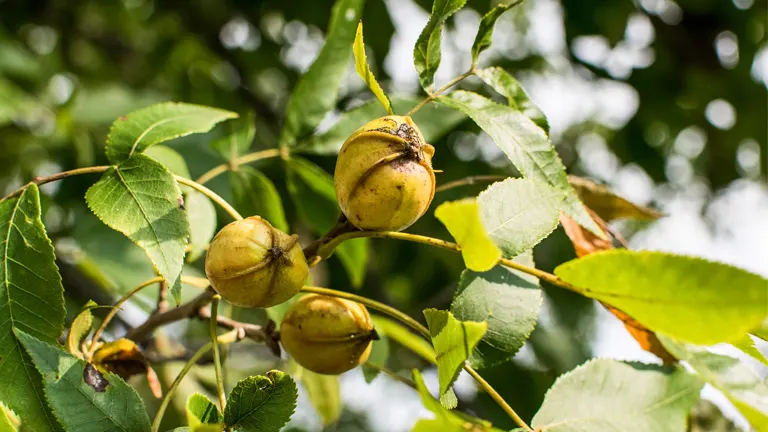
- Soil Improvement: Their deep roots help improve soil structure and health, enhancing nutrient cycling.
- Erosion Prevention: The trees’ extensive root system helps stabilize the soil.
- Biodiversity: Provides habitat and food sources for numerous animal species, including squirrels, deer, and various bird species.
Ecological Benefits of Bitternut Hickory Tree
The Bitternut Hickory Tree provides several ecological benefits. By dropping leaves and decomposing nuts, it contributes to soil health, enriching it with organic matter. This tree also plays a role in stabilizing stream banks and preventing erosion with its root system. Its nuts, although bitter to humans, are a vital food source for wildlife such as squirrels, chipmunks, and certain bird species. Additionally, the tree’s dense canopy offers shelter for numerous animals, making it an integral part of the forest ecosystem.
Bitternut Hickory Tree Flowering and Pollination
The Bitternut Hickory Tree typically flowers in late spring, with male and female flowers growing separately on the same tree. The male flowers, called catkins, are long and drooping, while the smaller, inconspicuous female flowers appear at the tips of new growth. These flowers are wind-pollinated, meaning they do not rely on pollinators like bees but rather on breezes to carry pollen between trees. The tree’s flowering season plays a role in the reproductive cycles of certain insects and birds, which may time their nesting to take advantage of the seasonal abundance.
Is Bitternut Hickory Tree Drought-Tolerant?
The Bitternut Hickory Tree is moderately drought-tolerant once established, but young trees require consistent moisture. This adaptability allows it to survive in both flood-prone and drier areas, making it suitable for a range of habitats. However, in extended periods of drought, the tree’s growth may slow, and foliage may thin as the tree conserves water.
Bitternut Hickory Tree and Wildlife Interactions
This tree has an essential relationship with local wildlife. Squirrels and chipmunks rely on the tree’s nuts as a critical food source, especially in winter months when other food options are scarce. The dense foliage provides nesting and shelter for a variety of birds, while fallen branches create ground cover for small mammals. Certain insects also have a symbiotic relationship with the tree, including caterpillars that feed on its leaves, contributing to the local food web and attracting insectivorous birds.
Final Conclusions
The Bitternut Hickory Tree holds significant ecological and practical value. Its role in enriching soil, stabilizing riverbanks, and providing food and shelter to wildlife highlights its importance in maintaining forest ecosystems. With its deep roots in North American biodiversity, conservation efforts for hickory trees, including Bitternut Hickory, contribute to healthier, more resilient forests that support a wide variety of plant and animal life. Cultivating and protecting this tree helps sustain a rich natural heritage, making it an invaluable part of North American landscapes.
Frequently Asked Questions (FAQs)
- What is the scientific name of the Bitternut Hickory Tree?
The scientific name is Carya cordiformis, and it belongs to the Juglandaceae family. - What are the main characteristics of the Bitternut Hickory Tree?
It has pinnate leaves with 7–11 leaflets, smooth bark that becomes ridged with age, and produces bitter-tasting nuts. - Where does the Bitternut Hickory Tree grow?
It is native to North America, commonly found in moist, well-drained soils from the Great Lakes to the Gulf of Mexico. - What is the ecological role of the Bitternut Hickory Tree?
The tree helps improve soil structure, prevent erosion, and provides food and habitat for wildlife. - How can I grow a Bitternut Hickory Tree?
Plant in deep, well-drained soil with access to full sun. Water regularly when young and ensure good soil health for best results. - Is the Bitternut Hickory Tree drought-tolerant?
Mature trees can tolerate some drought, but young trees require consistent moisture for optimal growth. - When does the Bitternut Hickory Tree flower?
It flowers in the spring with yellow-green catkins that are wind-pollinated. - What wildlife depends on the Bitternut Hickory Tree?
Squirrels, chipmunks, birds, and deer feed on its nuts and use the tree for shelter.
We hope this guide has shed light on the ecological importance of the Bitternut Hickory Tree. Have experiences or tips on supporting its conservation? Share your thoughts below to inspire others and encourage sustainable practices. Don’t forget to share this guide with fellow nature lovers and those committed to protecting our forests for future generations.


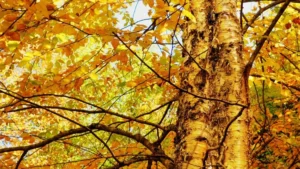
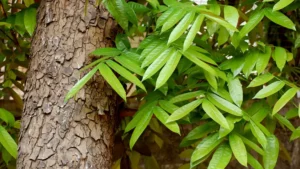
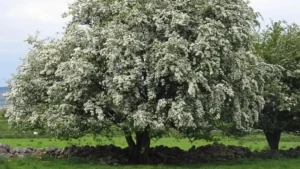
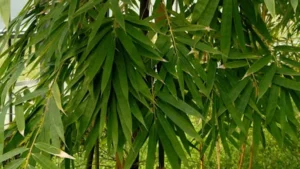

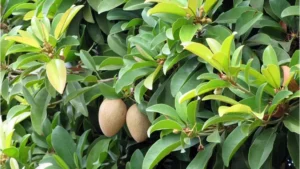

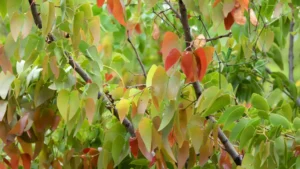
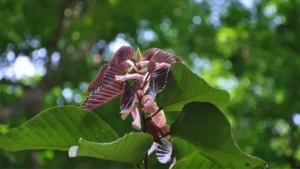
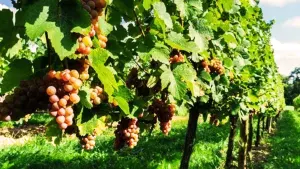
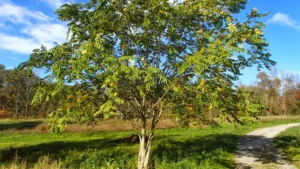
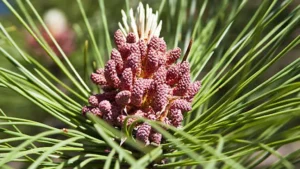
Leave your comment